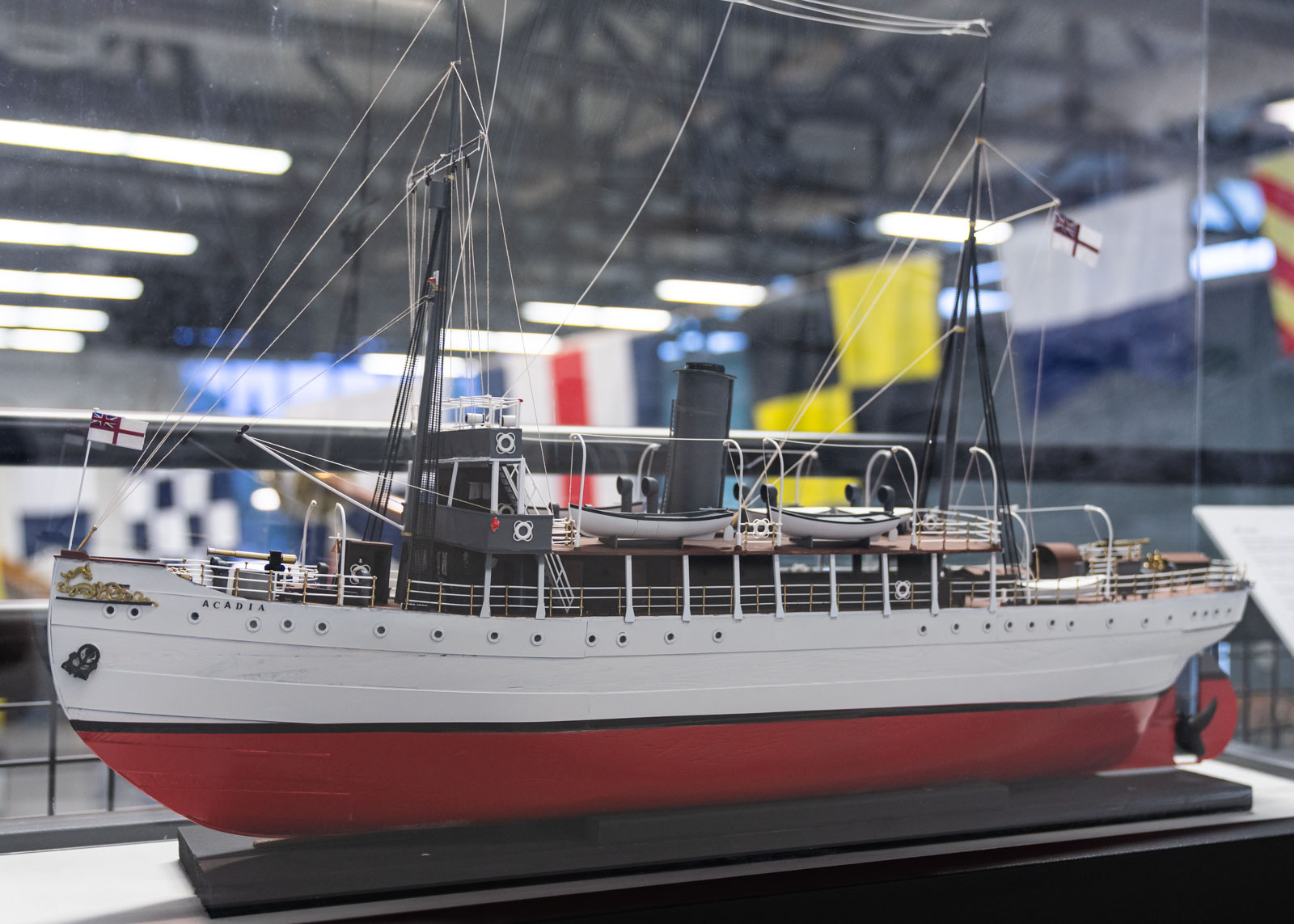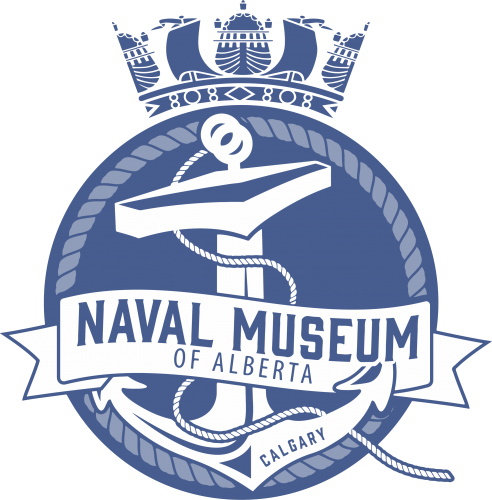HMCS Acadia

Acadia was launched 8 May 1913 as Canadian Government Ship (CGS) to survey the Atlantic Coast for the Hydrographic Survey of Canada. She was built with a thicker hull plating and heavy framing to enable her work in northern waters, where she conducted surveys in Hudson Bay and the Bay of Fundy before she was commissioned by the Royal Canadian Navy in 1917.
Commissioned as HMCS Acadia during World War I, the ship was fit with a 4-inch gun forward, a 12-pounder aft, and depth charges and was assigned to conduct anti-submarine patrols in the Bay of Fundy and the Gulf of St. Lawrence.
HMCS Acadia was serving as a guard ship at the entrance of Bedford Basin when the Halifax Explosion happened on 6 December 1917 where she miraculously suffered only minor damage, having been one mile from the explosion.
After the end of World War I, the ship was returned to the Hydrographic Survey of Canada. The beginning of World War II saw the ship returned to the Royal Canadian Navy as the HMCS Acadia, where she served as an anti-aircraft and gunnery training ship, coastal patrol vessel, and convoy escort.
In 1945 the ship was again returned to the Hydrographic Survey of Canada and was retired from service on 28 November 1969. She initially served as a museum ship at the Bedford Institute of Oceanography before becoming part of the Maritime Museum of the Atlantic in February 1982. She was made a National Historic Site in 1976, and every year on 6 December, she hoists the same signal flags she displayed on the fateful day of 1917 to commemorate the anniversary of the explosion.
HMCS Acadia is today, almost a century later, the only remaining ship to have served in both World Wars and be present at the Halifax Explosion.
Reference Links:
Halifax Military Heritage Preservation Society – HMCS Acadia
Government of Canada – HMCS Acadia
Maritime Museum of the Atlantic – CSS Acadia
